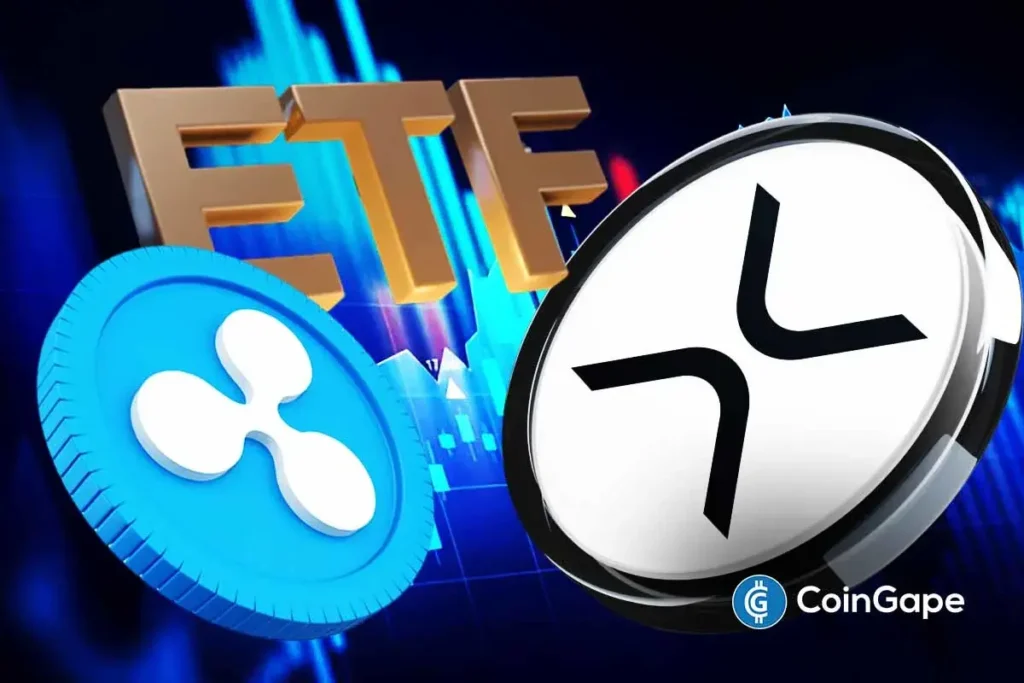October 2025: A Pivotal Month for Ripple and XRP
As October 2025 approaches, Ripple faces several significant decisions that could dramatically impact its future. Bill Morgan, a crypto lawyer, has indicated that crucial developments are expected, particularly following the U.S. Securities and Exchange Commission’s (SEC) recent postponement of rulings on multiple XRP Exchange-Traded Fund (ETF) applications. With both the ETF decisions and Ripple’s national bank charter application looming, October could catalyze a notable evolution for XRP.
Why October is Crucial for Ripple
In a recent commentary, Morgan noted that the month could play a pivotal role in XRP’s potential growth trajectory. The SEC’s decision to delay judgments on various XRP ETF applications signifies an essential time for market participants. Notably, Ripple’s application for a national bank charter is also slated for consideration, further amplifying October’s significance. As Morgan stated, "All these spot ETFs including XRP spot ETFs being delayed until late October 2025, paired with Ripple’s banking license, creates a unique confluence of events." This dual focus on regulatory approvals could position Ripple favorably within the U.S. financial landscape, signaling a path toward mainstream integration and regulatory clarity.
The Impact of ETF Approvals
Recent delays by the SEC concerning various XRP ETF applications highlight the increasing scrutiny around the cryptocurrency sector. The extended review period, which includes plans from renowned firms like Grayscale and WisdomTree among others, sets a framework for potential market developments. With deadlines pushed back to mid-to-late October, the SEC faces a strict timetable that limits any further extensions, making this month critical for final determinations. If approved, these ETFs would provide institutional investors regulated access to XRP, potentially driving increased liquidity and adoption.
Conversely, a rejection would hinder Ripple’s efforts to integrate with traditional financial markets, signaling regulatory hesitance towards cryptocurrency adoption. The outcome of these ETF applications will resonate beyond just Ripple; it could set a precedent for other cryptocurrencies seeking similar market validation.
Ripple’s National Banking License Application
In addition to potential ETF decisions, Ripple’s application for a national bank charter looms large. Following the Office of the Comptroller of the Currency (OCC) guidelines, review processes typically conclude within 120 days, suggesting a late October timeline for Ripple. Should this application be successful, Ripple would join an exclusive group of crypto firms operating as federally regulated trust banks—a distinction that would enhance its credibility significantly.
Furthermore, Ripple’s pursuit of a Federal Reserve master account, which would allow RLUSD reserves to be directly held at the central bank, underscores the company’s ambitions to embed itself further into the U.S. financial crux. This combination of a banking license and a master account could mark a transformational moment for Ripple as it navigates its future amidst evolving regulations.
The Regulatory Landscape
The conclusion of the SEC-Ripple lawsuit has set the stage for Ripple’s enhanced push towards market integration. As regulatory clarity improves, XRP stands to benefit significantly from any favorable decisions regarding the pending ETF applications and the bank charter. The sense of urgency surrounding these approvals highlights a turning point for Ripple, one that could bolster its operational framework within the U.S. financial ecosystem.
Given the evolving regulatory landscape in the cryptocurrency sector, the outcomes within October have the potential to redraw the contours of what’s possible for Ripple and XRP. A favorable response from the SEC regarding ETF applications would facilitate institutional interest and confidence in XRP, while a banking license could offer the company operational stability and flexibility.
Institutional Interest and Market Implications
The ramifications of October’s decisions extend beyond Ripple alone; they possess the capacity to influence the broader cryptocurrency market. If the XRP ETF gains approval, institutional investors would have a legitimate avenue to engage with the digital asset, enhancing overall market liquidity and adoption rates. The introduction of regulated financial products could also encourage additional investments in the burgeoning cryptocurrency sector.
On the flip side, if the ETF approvals are denied, it may create an atmosphere of skepticism among potential investors, stagnating XRP’s growth trajectory and potentially impacting the perception of cryptocurrencies as viable investment options. Ripple’s efforts to integrate its technology with traditional finance could falter, necessitating a reassessment of strategies moving forward.
Conclusion
In summary, October 2025 stands as a landmark month for Ripple as it awaits pivotal regulatory decisions that could redefine its trajectory and the future of XRP within the U.S. financial system. With the SEC’s ETF rulings and Ripple’s national bank charter application on the horizon, stakeholders are keenly aware of the stakes involved. The convergence of these events may determine XRP’s capacity for growth and acceptance in a rapidly evolving regulatory environment. As the situation unfolds, market participants will be eager to witness how these decisions shape the landscape of cryptocurrency investment and its integration into traditional financial frameworks.


